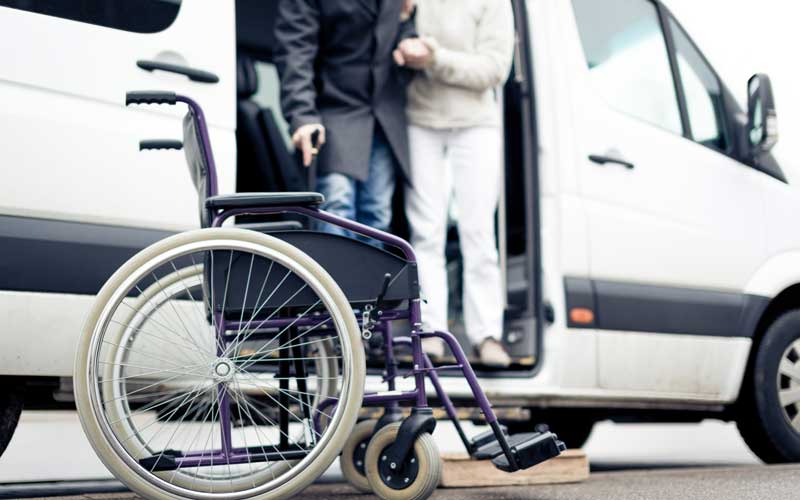A recent survey from the American Advisors Group found that 74% of adult children of baby boomer parents prefer that their parents retire and age in their own homes—this to relieve the financial and emotional pressures stemming from elder care and growing retirement insecurity.
Staying in your home as you age allows you to stay close to your friends and family, remain in a home you love, and (possibly) save some money on assisted living or nursing home care. We talk a lot about the common costs of aging in place, like continued housing expenses and remodeling prices, but other unexpected costs can come up as you prepare to age in place successfully. Let’s take a look at those hidden costs.
1. Home Health Aides
If you want to live independently but need help with certain activities of daily living (ADLs), home health aides and skilled nurses can come to your home and help administer medications, offer companionship, and perform light housekeeping duties.
The national median cost of a home health aide is $27 per hour, but the costs will vary based on the services provided. A healthy, independent senior can get assistance with part-time (two hours daily) housework, meal preparation, hygiene, and cleaning for about $1,775 a month.
The costs of aging in place can add up, but paying a home health aid is still lower than funding other senior housing options. Medicare may pay for short-term care if you’re recovering from an illness or injury, but it won’t cover personal care or housekeeping services.
2. Transportation and Mobility Aids
If you can’t drive a car, it becomes harder to leave the house and socialize. Isolation and depression are common among the elderly, and studies show it increases your risk of sickness. Consider low-cost public transportation, such as a bus line or a paratransit service that provides curb-to-curb service. The Americans with Disabilities Act stipulates that paratransit companies can’t charge more than 1.5 times the cost of bus fare in your area if the driver is on a regular route. Medicaid holders can access paratransit services for free.
To find services in your area, contact your local National Association of Area Agencies on Aging. Also, many healthcare networks with hospitals and clinics offer free ride programs for patients with doctor appointments.
You might also consider using mobility devices in your home and around your property, such as scooters, walkers, canes, and even electric wheelchairs.

3. Home Technology and Security Upgrades
Seniors today are more open to technology as safety and convenience solutions. Home security systems add an obvious layer of protection, and smart home technology can allow for greater mobility and convenience. As you age in place, you might consider the following systems:
- Medical alert devices: $20 to $45 per month for at-home or on-the-go systems; $30 to $50 for medical alert smartwatches. Pricing will vary depending on equipment fees.
- Fitness trackers: $80 to $400
- Home security systems: $10 to $53 per month, depending on the price of the equipment
- Smart voice assistants: $60 to $449, depending on the system
4. Vital Energy Efficiency Improvements
Springing for energy-efficient upgrades can help you save money (certain home upgrades are eligible for a residential energy efficiency tax credit through 2032). Plus, these upgrades can help you stay comfortable and safe during power outages.
Some valuable energy-efficient improvements include:
- Using longer-lasting, energy-efficient LED light bulbs to increase visibility: $4 a piece for an ENERGY-STAR-qualified bulb.
- Installing new windows for greater energy savings and comfort: $800 to $2,000 per window. This includes professional labor, as a pro should always install windows to ensure they meet building and safety codes.
- Buying a generator to protect against power loss: You can buy a reasonably sized portable generator for around $4,000 to run vital systems during an outage. A whole-home generator can exceed $17,000.
- Solar panels or lighting systems to increase self-sufficiency:
- Re-blowing insulation for better efficiency: Around $1,000 to $1,500 per 1,000 square feet of wall space (not floor space). The final cost will depend on the type of insulation and local labor rates.
5. Safety Modifications
As you age, you might enlist contractors and specialists to help transition your home to a “universal design,” a concept for building, designing or remodeling a home so it’s more comfortable, convenient, safer, and easier for people to use.
Aging-in-place remodeling can be expensive, but you should consider these accessible home modifications—especially if you have mobility issues or live with a person with a disability:
- Handrails and grab bars: $19 to $122+, not including professional installation
- Accessibility ramps: $390 to $2,500+, not including professional installation
- Wheelchair lifts, elevator lifts, and/or stair lifts: $4,000 to $39,000+
- Walk-in tubs and showers: $1,000 to $15,000+
- Wider doorways: $700 to $2,500 per door
- Non-slip flooring: $25 to $40 for mats and $1 to $4 per square foot for tile or LVP
Also, consider furniture placement. The ADA has advice and compliance information for spaces with fixed furniture.
6. Meal Prep Assistance
Accessing healthy meals can become another costly challenge as you cook and shop less. Here are your options:
- Your local senior center likely offers meals through the Older Americans Act. Seniors can access meals for free or at a deep discount while also socializing with others.
- Meals on Wheels operates in nearly every community in the U.S. and offers needs-based prices with low-cost or free meal delivery. Find your local chapter on the Meals on Wheels website.
- Grocery delivery services are now standard practice at most supermarkets. Simply add items to an online cart using an app or website, place the order, and wait for delivery. A small delivery fee will be added to your grocery bill.
- Meal delivery services will consider your food preferences and allergies to design a week’s worth of pre-cooked or pre-packaged meals delivered to your door. These subscription services start at $60 per week and increase depending on the number of meals you buy.
- A personal chef can also prepare tasty, nutritious meals in your home. This option is expensive and can cost from $75 a meal to $500 a week.
7. Outdoor Maintenance

Decreased mobility makes outdoor maintenance tasks like mowing the lawn, cleaning gutters, or shoveling snow more difficult as you age. Here are a few costs of yard maintenance tasks to consider when budgeting for retirement. These costs will vary based on your location and yard size.
- Basic mowing and edging: $50 and $250, depending on lot size
- Weeding: $20 to $40
- Trimming hedges and plantings: $50 to $75 per hour
- Snow removal: $30 to $75 per hour
Check with your church or local senior center to ask about volunteer or low-cost programs for seniors who need help with snow removal, lawn care and other tasks.
8. Caregiver Stress
When we weigh the burden placed on caregivers, it’s important to consider it a physical, mental, and monetary cost. More than 41.8 million unpaid caregivers care for people over age 50, spending more than 34 hours a week tending to loved ones.
Leading with a servant’s heart can be immensely gratifying and also stressful. Caregivers must monitor their feelings and continually watch for signs of overwhelm, such as weight fluctuations, sadness, and less interest in social activities.
As you prepare to age in place, think about how your family will care for the caretaker. Employing strategies like joining a support group or accepting help from outside sources can relieve some of the burden. For example, respite care is a great way to snag short-term relief, though most insurance plans do not cover these costs ($75 per day on average).
Getting Help with Aging in Place Costs
Medicare covers 80% of in-home costs under your Part B plan. Supplemental Medicare insurance could ease the cost of getting help in your home.
Help is also available for seniors through state and federal programs to maintain or modify their homes without exhausting savings. For low-income earners in rural areas, the U.S. Department of Agriculture Rural Repair and Rehabilitation Grants provide low-interest loans or grants projects such as remodeling a bathroom for wheelchair access, installing walk-in tubs, building wheelchair ramps, or widening doorways and hallways.
Veteran seniors may be able to get help with remodeling costs from programs and grants from SAH, SHA and HISA. You may be eligible for an HCBS waiver through Medicaid as well.
Resources like Benefits.gov and BenefitsCheckUp can help you discover possible benefits you might qualify for. You may be eligible for an HCBS waiver through Medicaid as well.

